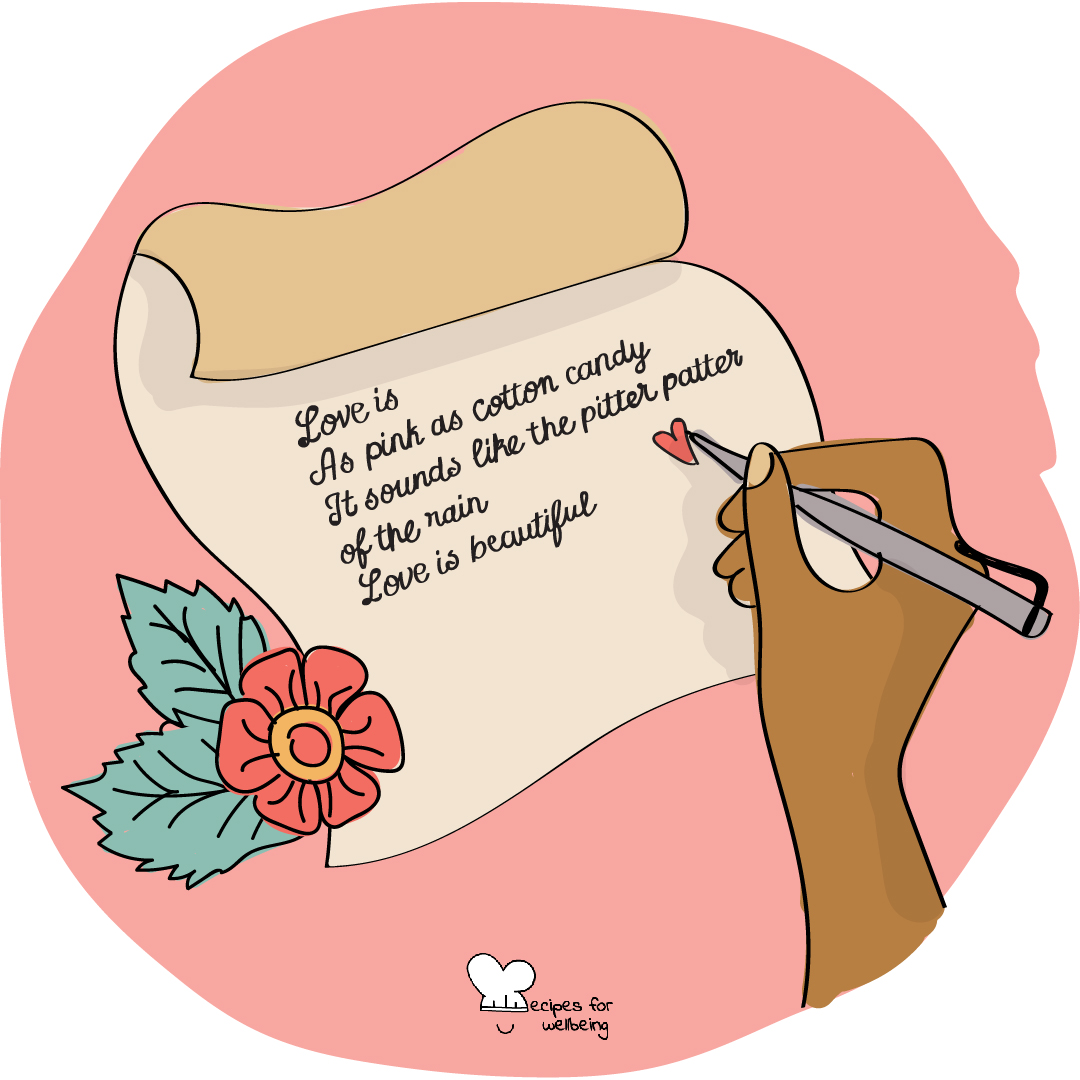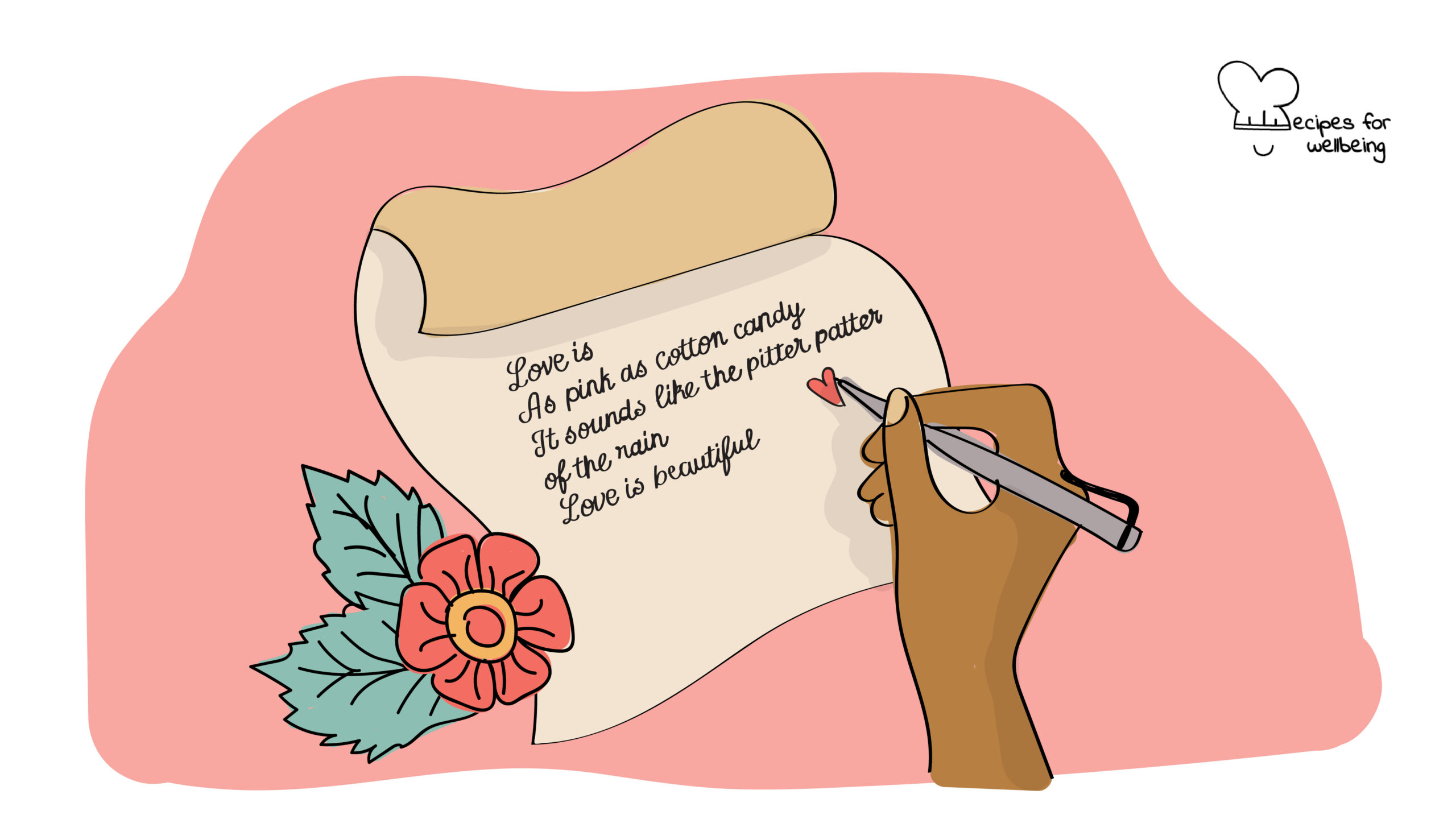
The gift of poetry
Every work of art expresses, more or less purely, more or less subtly, not feelings and emotions which the artist has, but feelings and emotions which the artist knows; their insight into the nature of sentience, their pictures of vital experience, physical and emotive and fantastic. ―Hannah Arendt
👥 Serves: 11-25 people, 2-10 people
🎚 Difficulty: Easy
⏳ Total time: 11-30 minutes, 31-60 minutes
🥣 Ingredients: Writing and colouring material, paper, access to the internet and a digital device if doing it online
🤓 Wholebeing Domains: Liberatory Learning, Positive Emotion, Radical Care
💪 Wholebeing Skills: Affirmation, Altruism, Celebration, Closeness, Creativity, Curiosity, Giving, Relating to Others

The gift of poetry
📝 Description
Using metaphors to turn your emotional states into poetic gifts.
Poetry, like many other forms of art, allows us to discover and express ourselves differently. In this recipe, you will be invited to use the power of poetry to deep dive into an emotion and experience it fully and even share it with others.
This recipe has been kindly donated by Jogyasa Labroo, co-founder of Slam Out Loud. To do this activity online, go to www.bitly.com/giftofpoetry.
👣 Steps
Step 1 – Grounding (3’)
This quick deep breathing exercise is wonderful when you need to pause, take a deep breath, and relax. It helps you re-centre your attention by using imagery to find focus in the moment.
- Hold the left hand in a fist. Imagine it is a flower.
- Hold the right hand in a fist. Imagine it is a candle.
- Inhale, pretending to sniff the flower.
- Exhale, pretending to blow out the candle.
Encourage everyone to breathe deeply, to really smell the flower. Then tell them to exhale completely, to really blow out the candle. Do this a few times until everyone feels more relaxed.
Step 2 – Choose an emotion (2’)
Close your eyes. Think about how you are feeling right now. If you had to pick one emotion that you are feeling the most, what would it be? Try to really feel your emotion in the body and stay with it for a while.
Step 3 – Write the poem (5’)
The first line of your poem is, “[Your chosen emotion] is…”, e.g. “Love is…”. Complete the first line of the poem with your chosen emotion. Now think of a colour that brings your emotion alive and an object that truly represents that colour in your mind’s eye. For instance, it could be pink for love and the object could be cotton candy. The second line of the poem is, “as [your colour] as [your object]”, e.g. “as pink as cotton candy”.
Now think of a sound that reminds you of your emotion. For love, I think of the sound of the pitter patter of the rain. So, your third line is, “It sounds like [your sound]”. Finally, think of the best describing word for your emotion. I think love is beautiful. Similarly, the fourth and last line of your poem is, “[Your chosen emotion] is [describing word]”.
That’s it! Look at your poem on your emotion – here’s mine:
Love is
As pink as cotton candy
It sounds like the pitter patter of the rain
Love is beautiful
Step 4 – Sharing and harvesting (20’–50’)
Invite everyone to sit in a circle (or to turn their webcams on if online) and share their poems without any additional words or explanations. When everyone has had the chance to share their poem, invite participants to reflect on their experience and how they felt throughout the activity.

